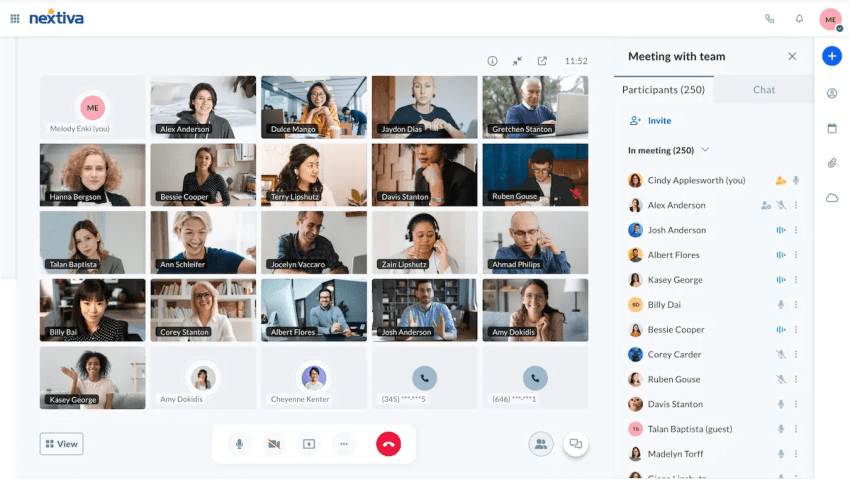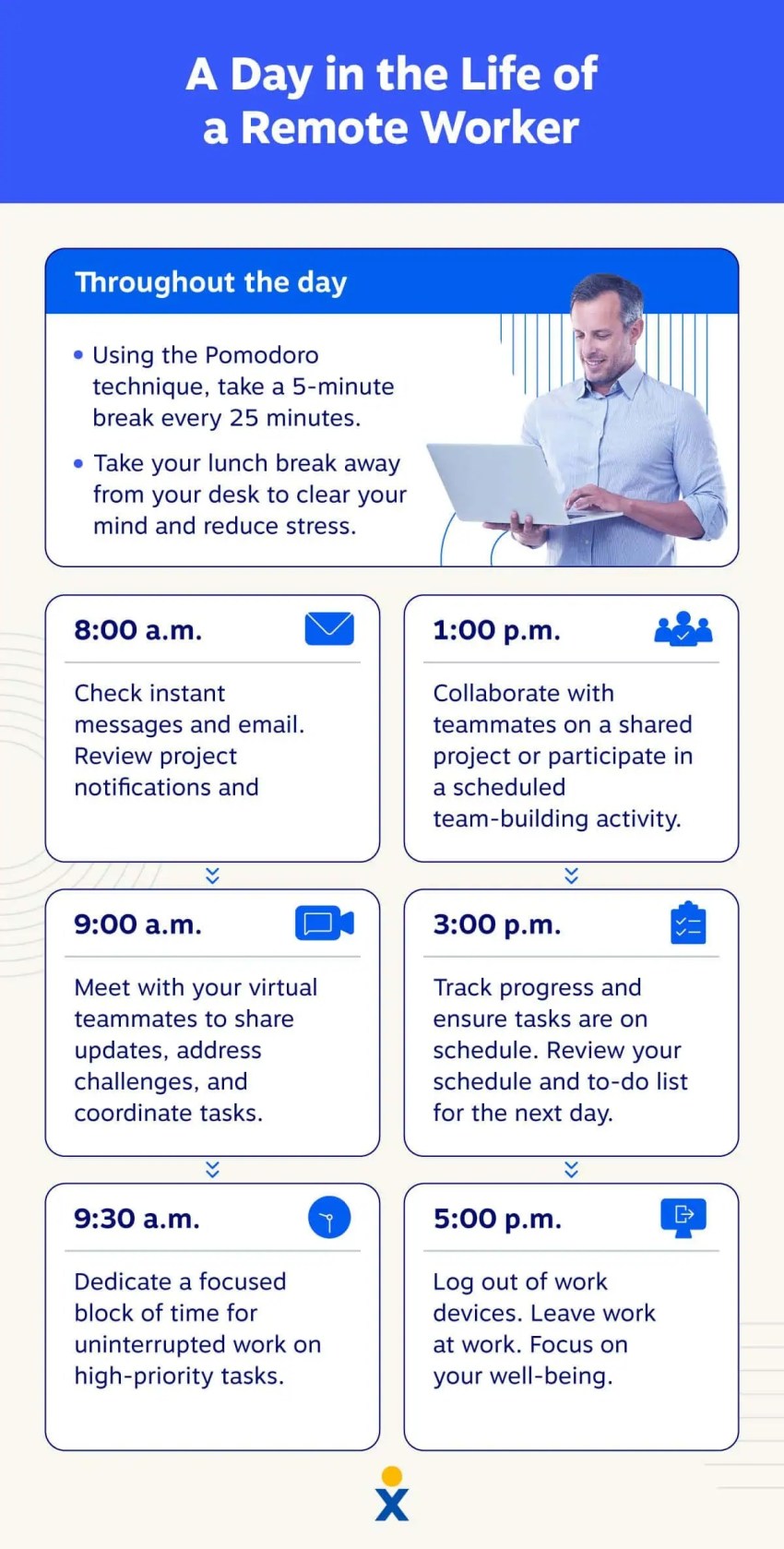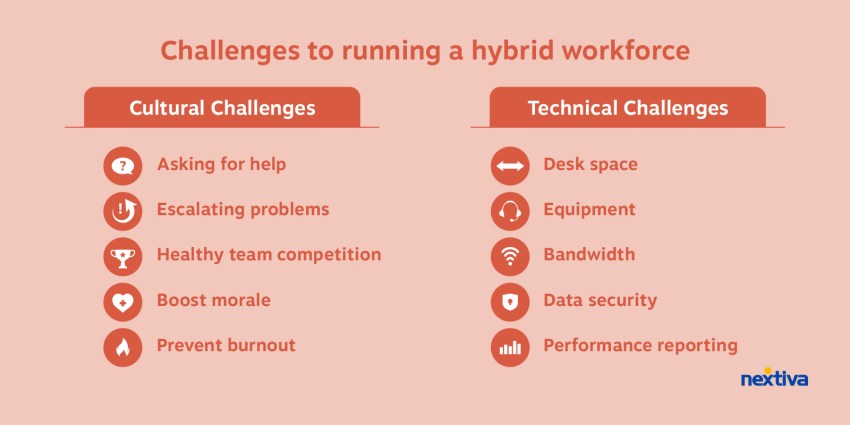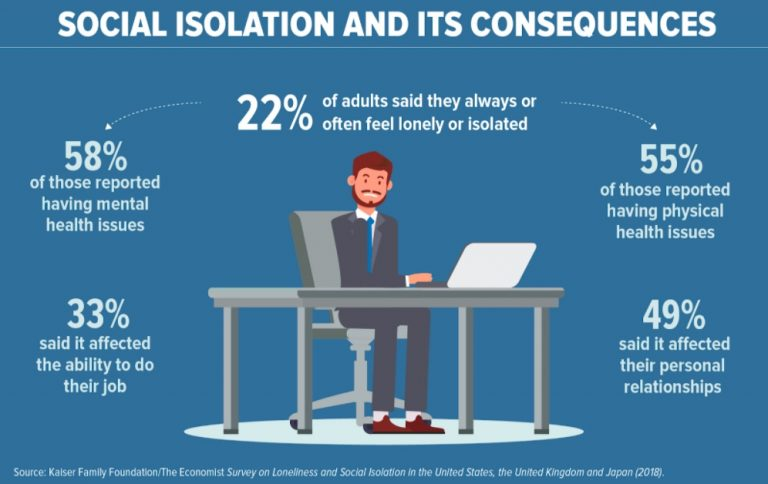Distributed teams have become the standard way of working. What started as an emergency response during global disruptions has evolved into a strategic advantage for businesses worldwide. Remote work tools have matured alongside this shift, moving from basic video calls and email threads to AI-powered platforms specifically designed for remote and hybrid teams.
Effective remote collaboration offers businesses unmatched flexibility and access to global talent. But transitioning to a remote workforce isn’t just about setting up virtual meetings. It requires the right technology stack, thoughtful communication practices, and strategic execution.
Our guide details strategies for building high-performing remote teams and explores the collaboration services that keep distributed workforces connected and productive. Whether you’re new to remote work or looking to refine your approach, these insights will help you navigate the challenges and make the most of a remote workforce.
What Is Remote Collaboration?
Remote collaboration is when employees work together from different locations to reach common goals using technology. This requires using digital tools to communicate, share information, and manage projects. Some of the common tools and technologies for remote collaboration include video conferencing, messaging apps, project management software, and cloud-based file sharing.
Virtual collaboration has become increasingly common due to the rise of remote work, enabling teams to work flexibly, access global talent, and maintain productivity regardless of geographical location.
A Blueprint for Remote Collaboration
To really make remote collaboration work, teams need to use the right tools and strategies for efficient communication, organization, and productivity. These ten essential tips and tools can help remote teams collaborate seamlessly so they can achieve their common goals.
1. Provide teams with the right remote collaboration tools
Making the right remote communication software available and properly training employees on how to use it can help you get the most out of employee interactions across dispersed teams. To maximize productivity and efficiency, teams need access to tools that make real-time communication, information sharing, and project management easier, such as:
- Look for platforms that offer essential features like instant messaging, video conferencing, file sharing, and project management capabilities.
- Choose tools that integrate seamlessly with your existing systems to avoid disruptions and improve workflow.
- Prioritize tools that ensure data security in order to protect sensitive information.
- Invest in onboarding programs to make sure employees can use the chosen tools effectively and understand their full potential.

By equipping your team with the right tools and knowledge, you can create a collaborative environment that drives success.
2. Hold regular 1-on-1 and team meetings
Engaging remote workers with regular team meetings and 1-on-1 check-ins keeps team communications cohesive while addressing challenges. Keep these points in mind:
- Scheduled team check-ins provide a place for sharing updates, aligning goals, and addressing concerns.
- One-on-one meetings allow for deeper conversations and relationship building.
Regular video calls and interactions help remote employees feel connected and engaged. Finding the right balance in meeting frequency and duration is also key to avoiding meeting fatigue while keeping the team aligned.

| High-end luxury spa Tricoci enhances remote employee engagement by utilizing Nextiva’s unified communication platform to ensure effective coordination across its 13 locations and over 1,300 employees. By enabling remote work and optimizing customer service through a centralized guest service center, Tricoci fosters collaboration between departments, ensuring a seamless experience for both employees and customers. |
3. Make meetings more effective
Not all meetings are created equal. Ineffective meetings can negatively affect morale and productivity, especially in a remote environment. Balancing meeting frequency, managing time effectively, and regularly evaluating and improving meeting processes are also important for sustaining productivity and avoiding meeting overload.
To get the most out of video meetings and enhance remote team collaboration, meetings should:
- Have a clear purpose with structured agendas
- Define roles for participants
- Encourage employee engagement through active participation and listening
Leveraging the right meeting technology, like video conferencing software, enhances the remote experience, while follow-up actions, like meeting notes or recordings, ensure that key information is captured and accessible.
| Collaboration software, Slack, revamped their Monday morning meetings by having teams submit written updates on key projects instead of providing verbal updates. The meetings now focus on enhancing cross-functional collaboration and discussing resource needs. |
4. Set project goals and expectations
Setting clear project goals and expectations with remote team members improves productivity by clearly understanding objectives and roles. Effective communication of goals, expectations, and timelines helps minimize misunderstandings and fosters accountability.
Involving team members in the goal-setting process increases engagement and trust while aligning team behaviors. Beyond task-oriented goals, it’s important to set expectations for online presence, communication, and conflict resolution to support collaboration. Regular goal alignment, measurable performance metrics, and celebrating successes keep the team motivated and on track.
| Nativo enhances collaboration with remote teams by setting clear goals and empowering employees through decentralized decision-making. By shifting to an inclusive leadership model, fostering transparent communication, and supporting employee development, Nativo creates a collaborative and engaged workforce that is aligned, productive, and invested in the company’s success. |
5. Foster a strong company culture through team building
Companies that create a strong team culture through virtual team building strengthens trust, respect, and a sense of community — leading to better employee retention and teamwork. Team building goes beyond fun activities, virtual happy hours, and interactive games. It builds a supportive environment, recognizes employees, promotes employee wellness and prevents burnout.
Virtual team-building activities help connect, collaborate, and celebrate, combating isolation and building relationships. Consistent effort and inclusivity are key to maintaining a strong remote team culture.
| Doist emphasizes a clear culture centered on ownership, problem-solving, and asynchronous communication, which unites its fully remote workforce. By prioritizing autonomy and trust, Doist empowers employees to take ownership of their work, contributing to a thriving, collaborative environment. Their remote-first mindset and strong team dynamics have resulted in low employee turnover and higher job satisfaction. |

6. Create a culture of open communication and feedback
A thriving remote team relies heavily on open communication and feedback. To create an environment where in-person, hybrid, and remote teams feel comfortable collaborating and brainstorming, consider these key elements:
- Create a space where team members feel comfortable sharing ideas and perspectives without fear of judgment.
- Encourage empathy and understanding among team members to build stronger connections and facilitate effective collaboration.
- Prioritize clear and transparent communication to overcome remote work challenges.
- Demonstrate the importance of open communication through your own actions and behaviors.

Implementing these strategies can help you create a remote work culture characterized by trust, respect, and shared goals.
| Analytics company data.world fosters open communication and collaboration, fostering innovation and problem-solving across the remote team. By providing access to essential information and encouraging cross-functional projects, they ensure alignment on goals and create a more innovative workplace. |
Related: Hybrid Work Model or RTO? Which Is Right for Your Business?
7. Establish clear communication guidelines and expectations
Establishing clear communication guidelines and expectations ensures that everyone knows how and where to communicate effectively. Regular check-ins keep the team aligned and allow for prompt issue resolution.
Selecting appropriate communication channels for different types of messages prevents information overload, while documenting communication processes promotes accountability and reduces ambiguity. Providing a VoIP phone service for quick calls to get clarity can reduce the back and forth of sending instant messages and emails. Setting shared communication norms and incorporating visuals can enhance understanding and build trust within the team.

| Nothing Bundt Cakes uses Nextiva to standardize communication and coordination across its 270+ franchises, ensuring consistent operations and scalable growth. The unified platform also offers robust remote support and troubleshooting, which is essential for managing its distributed workforce. |
8. Centralize information for easy knowledge sharing
A centralized knowledge base makes it easy for remote employees to find and share knowledge seamlessly. It prevents information silos and ensures consistency across teams and departments. Standardized documentation and organization make information more accessible and maintainable, aligning everyone with the company’s goals and vision.
Protecting sensitive information within the system and regularly updating the knowledge base to keep it relevant are essential. Additionally, training employees on how to contribute to and use the knowledge base, along with robust search functionality, enhances its effectiveness.
| Rack Attack enhances remote collaboration by centralizing information for easy knowledge sharing across its distributed workforce of over 40 locations. By using a unified communication platform like Nextiva, Rack Attack ensures effective communication, coordination, and support while standardizing processes and enabling remote access to business tools for seamless collaboration. |
9. Prioritize employee well-being
Prioritizing employee well-being, especially across remote teams, creates a positive work environment and enhances virtual collaboration. Recognizing and rewarding achievements boost morale, while virtual celebrations and team-building activities help combat isolation and create a sense of community.
Building trust and providing autonomy to employees empower them, increasing job satisfaction and productivity. Supporting work-life balance and offering mental health resources demonstrate care and commitment to employee well-being. Regularly evaluating and adjusting well-being initiatives ensures that the team’s needs are continuously met.

| Automattic prioritizes employee wellbeing and employee-centric cultures for employees spread across 77 cities. As a fully distributed company, it offers employees the freedom to work from anywhere, promoting autonomy and balance. Automattic also invests in the employee experience by providing stipends for co-working spaces or home office setups and builds a strong sense of community through initiatives like the annual Grand Meetup, which counters isolation and strengthens team bonds. |
10. Enable clear and consistent communication
Clear and consistent communication is one of the key best practices for working remotely. Regular interaction through remote collaboration tools is essential to match the success of face-to-face communication. Understanding and respecting different communication styles while encouraging active listening can strengthen team relationships and foster trust.
Overcoming barriers like time zone differences or technical issues is crucial for maintaining smooth communication. Strong leadership is key to setting expectations, modeling effective communication, and resolving conflicts to keep the team aligned and productive.
11. Encourage mindset shift for remote work
For someone transitioning from working on-site to a remote or hybrid position, it’s more than a simple location change. It’s a different mode of collaboration that requires patience, intentional communication, and an understanding of other teammates’ work styles.
You can set up virtual games and team-bonding exercises to help teammates build rapport and learn the nuances of working as a team remotely. It’s a fun way to introduce employees to the new mindset shift and enable them to pick up new habits for effective remote collaboration, such as clear communication, flexibility, and inclusiveness.
12. Responding when team collaboration falters
Breakdowns in team collaboration are unavoidable. Even the best teams face these challenges once in a while. What truly matters is how you address the situation when it arises.
Open direct communication: Deal with hiccups promptly to prevent them from becoming larger issues. Schedule a one-on-one meeting where team members can express concerns, gain clarity, and resolve misunderstandings, so the group can progress effectively.
Disagree and commit: While several ideas come up during deliberations, only one makes the final cut. Disagree and commit is a term used to describe an attitude where all opinions are heard and valued, even though the entire team eventually commits to only one implementation.
Prioritize alignment and personal accountability: Encourage everyone to put organizational-wide goals above personal or short-term solutions. Let team members know that it’s also up to individuals to build a reputation as a collaborative teammate based on other employees’ willingness to work with them.
| Phat Rides uses Nextiva’s communication tools to enhance remote collaboration across its distributed team. With features like call recording and auto-attendants, the centralized platform supports the company’s growth and high-volume customer interactions and ensures consistent customer experiences. |

The Challenges of Remote Collaboration
Remote work offers numerous benefits, but it also presents unique challenges. Navigating these hurdles successfully is crucial for effective collaboration and team success:
- Managing time zones: Coordinating schedules across different time zones can be a significant hurdle for remote teams. Scheduling meetings that accommodate everyone’s availability requires careful planning and flexibility. Due to differing work hours and response times, misunderstandings and delays can arise.
- Finding the right remote collaboration tools: The abundance of collaboration tools for remote teams available and choosing the right tools to meet your team’s specific needs can be challenging. Integrating remote collaboration tools with existing systems and ensuring compatibility can also be time-consuming and complex.
- Lack of personal connection: Remote work can lead to isolation and a diminished feeling of connection among team members. Building rapport and trust, which often occurs naturally in face-to-face interactions, can be more difficult in a virtual environment. This can impact team morale, collaboration, and overall job satisfaction.
With its unified communications platform, Nextiva can help you overcome remote collaboration challenges Our all-in-one solution for voice, video, and messaging integrates with other business applications, and includes video conferencing and team collaboration tools to enhance personal connections and mitigate isolation.
Key Features Remote Teams Should Prioritize
Not all collaboration tools are created equal. High-performing remote teams strategically choose platforms based on capabilities that directly impact productivity and connection.
When evaluating collaboration services, prioritize these essential features:
Real-time and asynchronous communication
Effective teams need both instant messaging for urgent coordination and threaded discussions for thoughtful work across time zones. The best platforms support both seamlessly, letting teams choose the right mode without switching apps.
Project visibility and transparency
Clear visibility into task ownership, project status, and deadlines keeps distributed teams aligned. Transparent workflows prevent duplicate work and ensure nothing falls through the cracks.
Document sharing and version control
Centralized file storage with collaborative editing eliminates version confusion. Look for platforms that provide single sources of truth with automatic versioning and clear edit histories.
AI-enhanced productivity
Modern AI capabilities go beyond automation. Meeting transcription, automatic summaries, intelligent noise suppression, and sentiment analysis help teams work smarter and stay connected despite physical distance.
92% of companies have adopted AI to improve customer interactions, and the same technology powers better internal collaboration.
These features form the foundation for effective remote work. The right tools don’t just connect teams. They amplify productivity, reduce friction, and create seamless experiences regardless of location.
Remote Collaboration Tools
When used effectively, the best communication tools for remote teams can significantly enhance remote collaboration in many ways. This includes improving communication, enhancing project management, and boosting connections between team members.
Here are popular remote collaboration tools businesses use today:
- Slack is a channel-based messaging platform that fosters real-time interaction and information sharing. Its extensive integration ecosystem connects with thousands of business tools, while threaded conversations and powerful search functionality keep teams organized and productive.
- Zoom is the leading video conferencing tool that enables face-to-face interactions in virtual settings. Recent AI additions like automatic transcription, meeting summaries, and action item extraction make post-meeting follow-up significantly more efficient while maintaining reliable video quality for teams of any size.
- Trello provides visual project tracking with an intuitive card-and-board system. Its drag-and-drop interface requires minimal training, making it ideal for teams managing straightforward projects with clear stages and handoffs.
- Basecamp consolidates project communication, files, schedules, and tasks into unified project spaces. Everything related to a project exists in one place, with automatic check-ins replacing status update meetings and flat pricing regardless of project or user count.
- Notion creates hybrid workspaces that blend documentation, databases, and project management. Its blocks-based editing and customizable templates allow teams to build workflows that match their exact needs, from wikis to content calendars.
- Around & Gather offers innovative takes on virtual presence that reduce video fatigue. Around uses small video bubbles that overlay your screen, while Gather creates virtual office spaces where avatars move between conversation areas, facilitating more natural spontaneous interactions.
- Google Workspace and Microsoft 365 provide comprehensive collaboration suites with email, calendar, document editing, file storage, and video conferencing. Their familiarity, deep integration between components, and enterprise-grade security make them foundational choices for organizations of any size.
Why Nextiva Is a Remote Collaboration Ally
While specialized tools excel at specific functions, remote teams face a common challenge: tool sprawl. Juggling separate platforms for voice calls, video meetings, messaging, customer support, and project collaboration creates friction, fragments data, and drains productivity through constant context switching.
As a virtual call center, Nextiva takes a different approach, positioning itself as a remote contact center built for both customer-facing and internal collaboration. Instead of adding another tool to your stack, it consolidates essential functions into one unified platform.
All-in-one communication and collaboration
Nextiva combines voice, video, SMS, chat, and team collaboration in a single system. This consolidation eliminates the productivity drain of toggling between apps and ensures that customer conversations and internal coordination flow through one platform with consistent data.
AI-powered productivity for distributed teams
Built-in AI capabilities enhance every aspect of remote work. Automatic meeting summaries capture key decisions without manual note-taking. Sentiment analysis tools help managers identify team morale issues early. Shared inboxes ensure no customer inquiry or internal message gets lost when team members work different schedules or time zones.
Scalability that grows with your team
Whether you’re a five-person startup or a 500-employee enterprise, Nextiva’s architecture scales seamlessly. The platform supports over 1 million users across 100,000 businesses, many of them remote-native organizations that rely on flexible, distributed operations.
Unified data eliminates silos
When customer support and internal collaboration happen on the same platform, teams gain holistic visibility. Support agents see full interaction history before engaging customers. Managers access real-time analytics across all communication channels. Sales teams collaborate on deals without leaving the system where customer data lives.
81% of companies say they could improve customer experience by consolidating data from all interaction points into one system — a principle that applies equally to internal collaboration.
For remote teams seeking enterprise-grade capability without the complexity of managing dozens of disconnected tools, Nextiva offers a compelling solution: deep functionality across communication and collaboration without the friction of tool sprawl.
How Nextiva Helps Distributed Teams Stay Connected and Productive
Remote teams often have to juggle between multiple apps with separate communication channels. This fractured experience drains teammates, kills productivity, and causes confusion.
Nextiva brings all your communication and collaboration tools into one platform, ending app fatigue for remote teams. Trusted by over 100,000 small and mid-sized businesses, it streamlines virtual teamwork for remote and hybrid workforces.
Integrated team chat
Nextiva tames the chaos by centralizing your communications into one place. It combines emails, chats, and video calls into one consistent channel. Additional features like @mentions for tagging teammates, pins for important updates, and real-time file sharing help teams stay aligned, informed, and productive—no matter where they’re working from.
One-click video meetings
With Nexita’s One-Click Video Meeting feature, you can quickly set up HD video calls with team members and guest participants in one click. This tool also allows you to share your screen and record the call to help you get the best out of your online meetings.
Shared document workspaces
Shared workspaces accelerate project delivery by enabling multiple team members to collaborate on the same document in real time. This feature keeps everyone on the same page, as all collaborators edit, comment, and review feedback directly within a single document, instead of working on scattered, isolated copies.
Presence and availability
Nextiva’s presence indicators give teammates awareness of each other’s availability. This indicator automatically switches to “busy”, “in a meeting”, or “offline” depending on a particular user’s activity, so teammates aren’t left in the dark, waiting for replies from inactive users for hours.
Built-in task management
Everything you need to manage a team comes with Nextiva’s unified collaboration solution. This platform provides a built-in task manager that easily turns chats into tasks with set deadlines and auto-reminders.
Translation: you won’t ever need to switch between third-party project management tools to organize teams.
The Right Stack Powers Stronger Remote Teams
Tool overload doesn’t just complicate workflows; it actively hurts collaboration. When team members juggle six or seven platforms for daily work, critical context gets lost, data becomes fragmented, and productivity suffers from constant app switching.
The most effective remote teams don’t adopt more tools but consolidate around platforms that solve multiple problems simultaneously. They prioritize solutions that integrate seamlessly, scale gracefully, and eliminate silos between customer-facing and internal operations.
Nextiva streamlines remote work with all-in-one simplicity backed by enterprise-grade flexibility. By unifying voice, video, messaging, and collaboration in a single platform enhanced with AI-powered productivity tools, it removes the friction that prevents distributed teams from reaching their full potential.
Building a high-performing remote team requires more than good intentions. It demands the right technology foundation. Over 1 million users leverage Nextiva to eliminate tool sprawl and create environments where team members communicate efficiently, share ideas seamlessly, and contribute their skills without barriers.
Ready to simplify remote collaboration? Start your free trial today to experience how unified communications can transform your distributed team’s productivity.
Related: 30 Tips for Managing Remote Teams in 2025
The phone system for remote teams.
Move your PBX to the cloud or get a hosted VoIP system with superpowers. Nextiva is your remote work solution.

















 Productivity
Productivity 










